
Background information
Do design doctrines such as Bauhaus and Memphis still exist today?
by Pia Seidel

Bitten Stetter had been designing relaxed fashion for years. Then her mother got sick. Since then, she has been engaged in helping people along their final journey through design.
Like a hospital and EDM club at the same time. This is what this neon-lit showroom feels like. I look at a cold metal frame, right next to it is a hospital bed. Two screens are attached to it: one shows images of commode chairs, adult diapers and pillboxes. The other teething rings, bibs and mobiles. The colourful, beautiful world of newborns meets the loveless reality of old age. This perfectly reflects how our society treats life and death.
With her exhibition «DEATHign your final life,» in which everything revolves around the last journey, Bitten Stetter would like to draw attention to precisely this contrast. The graduate dressmaker and curator turned her back on fashion when her mother became terminally ill. She no longer wanted to be part of the over-saturated, over-designed clothing industry. She wanted to make a difference, focusing on palliative care. As a professor of the Trends & Identity course at the ZHdK, she dedicated her dissertation to «Things of Dying».
The last phase of life is the only one that is still taboo in our western world. This can be seen in the limited selection and aesthetics surrounding mortality. «You'll find plenty of jumpsuits for babies. But only one type of care shirt, which is neither qualitatively nor optically stunning. There's a veritable desert of design in this area,» Bitten remarks. As I browse through our range of products shortly thereafter, I see what she means: we carry just under 50,000 articles for babies and around 150 products for everyday life as a senior, including a single toilet chair.
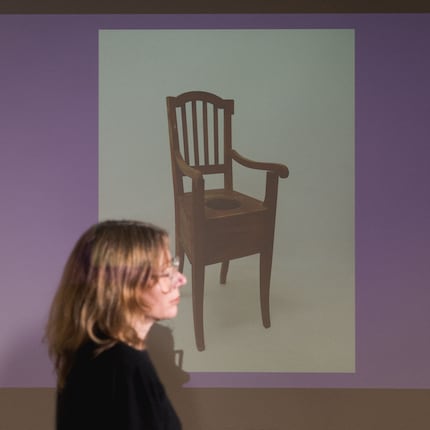
Diversity in design begins with birth and ends with the Silver Society. Only after death are there numerous possibilities to personalize a funeral or a grave. «Skinny jeans indicate that the wearer cares about their appearance and has a healthy lifestyle. But if you think of adult diapers or look at a toilet chair made of metal and plastic, horrific images arise,» Bitten says.
I'm convinced that the final phase of life scares us as much because it's so ugly
Although Bitten is emotionally involved in her mother's final journey, she doesn't give up her profession. She notes that not only beauty is lacking, but also certain things that promote care. There are no small things, such as greeting cards with a suitable slogan. You'll find birthday or mourning cards en masse. «Although the medical field is technically advanced, knowledge about the effect of design is lacking,» Bitten continues.
The commode chair in particular shows that instead of making progress, we even make regressions in the design of things for the dying. It serves as a toilet replacement when physically handicapped people cannot manage the way to the bathroom on their own. Nursing staff place it by the bed as needed to help the person in question onto the chair. From an institutional point of view, the toilet replacement meets all requirements: it's height adjustable, has swivelling armrests and is made of water-repellent material. Some models have wheels. All variants have a hole in the seat. It is often covered by a padded support. Underneath is a bucket that can be removed by caregivers to empty the faeces.
From a human perspective, however, it appears sterile, cold and lacking in style. This is mainly due to the lack of colour and the unpleasant plastic cover that sticks to the body. Cheerful pastel shades like lavender or lemon yellow aren't an option. «Models are available in a cool blue, black, or a friendly gray. White would be too sensitive. Red too bright. As colour is tied to time and personal taste, the choice in style is limited,» Bitten explains.
I'm convinced that the final phase of life scares us as much because it's so ugly.
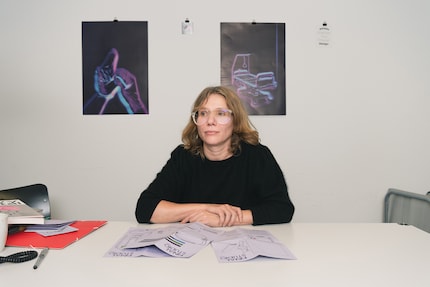
That wasn’t always the case. In her exhibition, slide shows illustrate beautiful drafts of old designs. The first night chairs from the 20th century are made of wood and elaborately decorated. They have a closed box with an opening on the top and a hinged lid. As a result, they were then used in the curative area. Only later, when indoor toilet flushing became possible, would they be needed in the curative sector as well as hospitals for physically handicapped patients. Then they disappeared from homes, and with that, their personalised appearance.
For these institutions, commode chairs had to be cheaper, stackable and more hygienic. Although it has long been possible to make a hygienic chair similar to a toilet seat from wood, nobody does it. In her research, Bitten only found one designer who has developed a modern night chair for camping.
The design of objects and furniture has an influence on our well-being, especially in these rooms. «I have experienced a crisis that has come up again and again,» says Bitten. «When humans and their range of movement are limited, one hoards things in their bed. Then come the nursing staff for daily work at the nursing bed. They clear things out and forget to put them back, partly because of their high workload. As a result, people no longer have access to their belongings.»
The physically inaccessible bedside table, like the toilet chair, becomes a symbol of ones loss of autonomy. Both things fill people in need of care with shame. The chair, because it serves the needy. The table, because it forces you to ask for help every time.
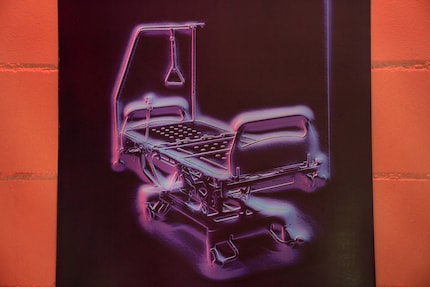
Out of necessity, Bitten brings a banal bicycle basket from home, which she attaches to the bed. It is within reach and movable. «What's interesting is that this object becomes a means of communication,» Bitten explains. «Nurses refer to these as luggage for a patient's final days. That's why, in their opinion, there's so much junk in it. What to take, what to remove? On the one hand, the objects are functional, on the other hand they communicate non-verbally. The bike basket may not be particularly sensual, but it stands for the fact that someone thinks about me and my situation. There is a cup holder in every car. Why are such simple things missing?»
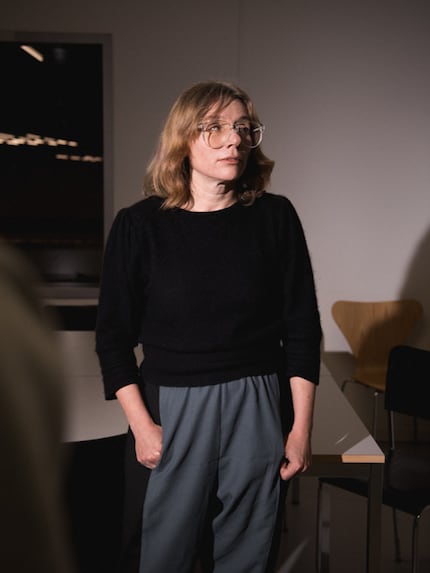
In the course of our conversation, I notice how concerned the designer is. She speaks quietly now and then, her voice fails completely at the end of a sentence. «What I miss most of all are pictures of moments spent together, talking about old times and laughing at the bed. Yet we rarely find such a quiet and stress-free place as a hospital room.»
In the «DEATHign your final life» exhibition, Bitten asks visitors what they would take with them to the few square meters. It takes me about five minutes to collect my thoughts and draw my answer on the blank piece of paper. I'm not so sure about my choice. I have never thought about what I would pack in my suitcase for the last journey.
«Confronting the end of life is meeting an invisible lifestyle. We don't know because we don't let it get to us,» Bitten says. That's why she deals with the last phase of life. In the context of her applied dissertation, she goes to the heart of the action: to palliative wards. There she observes the environment and the staff in their routine. «Nursing staff improvise daily, try to create missing «palliative care» objects spontaneously – despite a lack of time and resources. This way, they create more beautiful atmospheres. Knowledge about «what is good for you» usually remains hidden. It is only shared with relatives and loved ones in acute crises.» On the other hand, she visits nursing care fairs, does research on the Internet and uses museum databases.
«In the future, I would like to cooperate with my label Final Studio to redesign things like the commode chair,» Bitten says. «The commode chair is covered with shame. It takes effort to use it. The cool plastic cover does not make the event any better. That's why I'm investigating how heat can be generated to make the walk more comfortable.»
Bitten has already designed a prototype for a sippy cup. Its supposed to invite people to provide care: «As those affected don't know what to do for their seriously ill relatives, many sit helplessly by their bedside. Once, they were caretakers, working non-stop. From the moment there is nothing more to do or they think there is nothing more to do, design comes into play,» Bitten believes.
Something beautiful and useful can help out during crises. Passing drinks or a mouthwash stick enables sociality.
Objects of death are also intended to impart knowledge. «I believe that the design of these things makes an important contribution to making us lose the fear of our mortality. When something no longer frightens us, we stop making it taboo. We begin to deal with this phase of life. If we plan our end of life earlier, without being acutely affected, we can die more comfortably.»
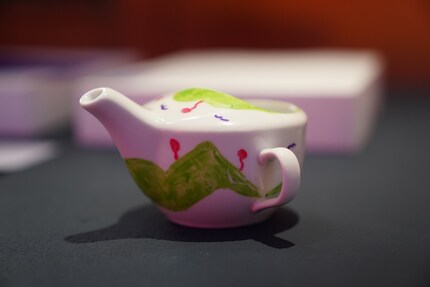
Bitten also seems to have given herself a redesign. Unlike what I would expect from someone who has been in the superficial fashion business, Bitten is not a bit vain. She wears reserved clothes and behaves shyly in front of the camera, curtesy of our photographer Thomas Kunz. The only thing that stands out is her large retro-style glasses. They make Bitten's eyes shine twice as bright when she talks about what the design of death objects means to her: «I believe in the soothing and comforting effect of loving care for the sick.»
Like a cheerleader, I love celebrating good design and bringing you closer to everything furniture- and interior design- related. I regularly curate simple yet sophisticated interior ideas, report on trends and interview creative minds about their work.
Interesting facts about products, behind-the-scenes looks at manufacturers and deep-dives on interesting people.
Show all